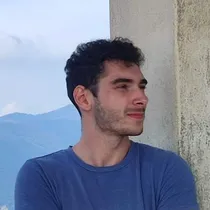Présentation

Notre laboratoire étudie les mécanismes de réparation de l’ADN indispensables à la survie des cellules cancéreuses. Révéler la function et la structure de ces voies moléculaires permettra l’identification de nouvelles cibles thérapeutiques pour le traitement du cancer.
DNA double-strand breaks (DSBs) are cytotoxic lesions that threaten genomic integrity. Failure to repair a DSB can have harmful deleterious consequences, including genomic instability and cell death. Indeed, misrepair of DSBs can lead to inappropriate chromosomic events such as translocations, which commonly underlie oncogenic transformation.
Typically, cells employ two classical mechanisms to repair DSBs: homologous recombination (HR) and nonhomologous end-joining (NHEJ) (Figure 1A, green box). In addition, alternative error-prone DSB repair mechanisms, namely alternative end-joining (alt-EJ) and single strand annealing (SSA), have been recently shown to operate in many different conditions and to contribute to genome rearrangements and oncogenic transformation (Figure 1A, blue box). In human cells, these mechanisms form a complex network composed of four distinct pathways, which can interplay, compete, or even compensate one for the other. For instance, classical and alternative pathways interplay and compete for the repair of DSBs occurring during replication (i.e. damaged replication forks) (Figure 1B).
Our laboratory is particularly interested in studying alternative DNA repair mechanisms, such as the alternative end joining (alt-EJ) pathway, that take place in cancer cells to compensate for the loss of homologous recombination (HR) activity (Figure 2A).
The clinical relevance of our studies relies on the fact that half of ovarian serous carcinomas and basal-like breast cancers entail a defect in HR, which prompts them to rely on alt-EJ for survival (Figure 2B). As a consequence, targeting alt-EJ players emerged as a new promising strategy for the treatment of HR-deficient tumors.
While alt-EJ has been studied in lower eukaryotes, little is known about its composition, regulation and mode of action in humans. Our team is using a combination of cutting-edge proteomics, molecular and cellular biology strategies to uncover new alt-EJ players and decipher their mechanisms of action in cancer. Identifying additional components of the alt-EJ pathway and understanding the crosstalk that exists between alt-EJ and other pathways could lead to the discovery of new potential synthetic lethal interactions and as such new potential drug target for cancer treatment (Figure 2B).
In addition, repair of DSBs contribute to the stabilization of damaged replication forks (RFs), that recently emerged as a central process that controls genomic stability and promotes chemoresistance. Characterizing the molecular pathways regulating genomic stability at damaged replication forks in HR-deficient cancers will increase our understanding of the cellular response to replicative stress, and in the same time, potentially allow the identification of new predictors (biomarkers) of chemo- sensitivity/resistance in these tumors (Figure 2B).
Our current project on the characterization of the alternative end joining DNA repair mechanism in cancer has been awarded an ATIP-Avenir and ERC Starting grant (starting date: July 1st 2017).
























